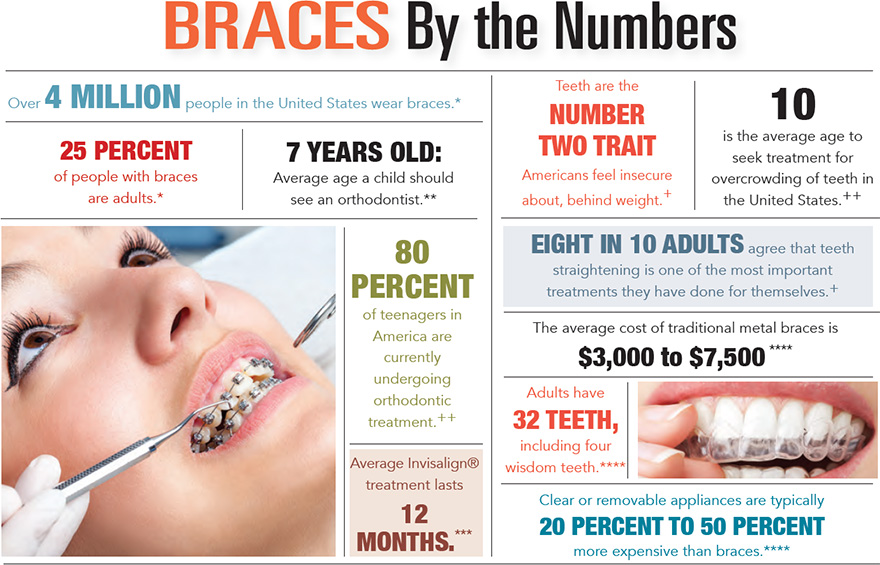“You need braces.” Those three little words can strike fear into the heart of any middle schooler, middle-ager or beyond – and anyone footing the bill. But if those three words conjure up nightmares of a smile studded with big silver squares, eons spent in the orthodontist’s chair or your dream vacation fund being emptied, think again. Newer technologies in orthodontics make the path to straighter teeth and a beautiful smile a more pleasant experience than the stereotype would have you believe.
‘Invisible’ Braces
“Moving teeth with clear aligners is by far the most significant and most rapidly advancing technology in the orthodontic industry,” said Dr. William Marshall of Marshall Orthodontics in Simpsonville.
Trading in the braces, wires and rubber bands, many adults today opt for a more aesthetically appealing method with clear aligners like the popular Invisalign® treatments.
“Ten years ago, most orthodontists would only attempt to treat the simplest cases with clear aligners,” Dr. Marshall said. “It’s still not a solution for everyone, but, today, an orthodontist skilled in moving teeth with them can successfully treat most cases that traditionally could have only been treated with braces.”
Dr. Marshall can digitally scan a patient’s teeth and send the scans along with a treatment plan for aligners to be fabricated, which takes about three to four weeks. Most Invisalign® patients average three months between appointments, so another benefit is less time in the orthodontist’s office.
Invisalign® aligners are designed to fit snugly and move teeth gradually. Typically, patients change them weekly to the next set, and they are engineered to progress with the treatment plan created by your orthodontist. Patients can take these trays out when they eat, making it possible to consume food that is typically off limits for braces and making flossing and brushing easier.
Another “invisible” treatment – lingual braces – has actually been around since the 1980s, but at the time were not a common option because special training was required to install them. Lingual braces work similarly to traditional braces but are glued to the lingual (tongue) side of your teeth so they are out of view. Technology has changed that. Though not as popular a treatment as clear aligners, some orthodontists who provide this option can take digital scans to make customized, robotically formed wires.
Shorter Treatments
Several products on the market claim to shorten treatment times and move teeth faster. For example, vibration devices are designed to be held between a patient’s teeth for a specified amount of time per day. Some of these devices include a specific wavelength of light that, when shined on the teeth and gums, supposedly moves teeth even faster.
“I can’t state definitively how effective many of these are because there is not yet a consensus in orthodontic literature, and orthodontists disagree on their efficacy,” Dr. Marshall explained.
He does not typically recommend them to his patients because the product increases the cost significantly. He does offer one of the vibration devices for use with Invisalign® treatments, which Dr. Marshall said seems to help seat the aligners better and more consistently. He offers the device at cost for patients who require the treatment to be finished as quickly as possible.
Without the vibration device, typical treatment times can vary from as little as six months to more than two years, depending on the severity of the problem and cooperation of the patient. The average time is between one and two years.
Braces and Wire Advancements
The technology of braces themselves has greatly improved in recent years. Smaller braces and a wire with built-in memory helps the braces work more efficiently.
In the past, braces were painful, in part due to a traditional wire system that created significant friction between the wire and bracket while helping guide the teeth into place. Today, a more passive system uses a slide mechanism that allows the wire to glide freely without friction, keeping the patient more comfortable as the teeth slowly move to the appropriate space. The new design is especially useful to alleviate overcrowding and has decreased the need for tooth extraction.
Even the braces themselves are customizable and come in endless options for all budgets and styles. Made from the same medical-grade steel as regular braces, kids who want to flash their own unique smile can choose different colored bands or pick from a variety of shapes like flowers, hearts, diamonds and stars to make braces fun.
Children and young adults hoping for a more discreet look are in luck as well; ceramic braces are designed to blend in with tooth enamel.
Adults also have the option to choose ceramic braces, in addition to silver- or gold-colored braces.
Financing Options
In addition to technological advancements to pull teeth into place, financial options have expanded, putting less pressure on the purse strings and opening the door to a straighter smile for just about everyone.
“The biggest thing we have done in our office to help with affordability is to have patients customize their own payment plans,” said Dr. Marshall. “We offer in-house financing with down payments as low as $250 and low extended monthly payments past the estimated length of treatment at zero percent interest.”
Planning a realistic down payment and affordable monthly amount is a good way to start. Flexible spending accounts and health savings accounts that allow people to set aside money for orthodontic treatment on a pre-tax basis are also good ways to budget for treatment. The perceived cost of braces or Invisalign® is an obstacle that keeps many people from getting the treatment they need, but financing offered by the orthodontist’s practice can help establish an affordable financial plan.
If you have been considering improving your teeth and smile, contact an orthodontist today to discuss how braces or aligners can help put you on the right path toward a straighter, more confident smile.
By Anne Shuler Toole

